Tenure 1620 – 8 November 1627 Name Nur Jahan Predecessor Saliha Banu Begum | Children Ladli Begum | |
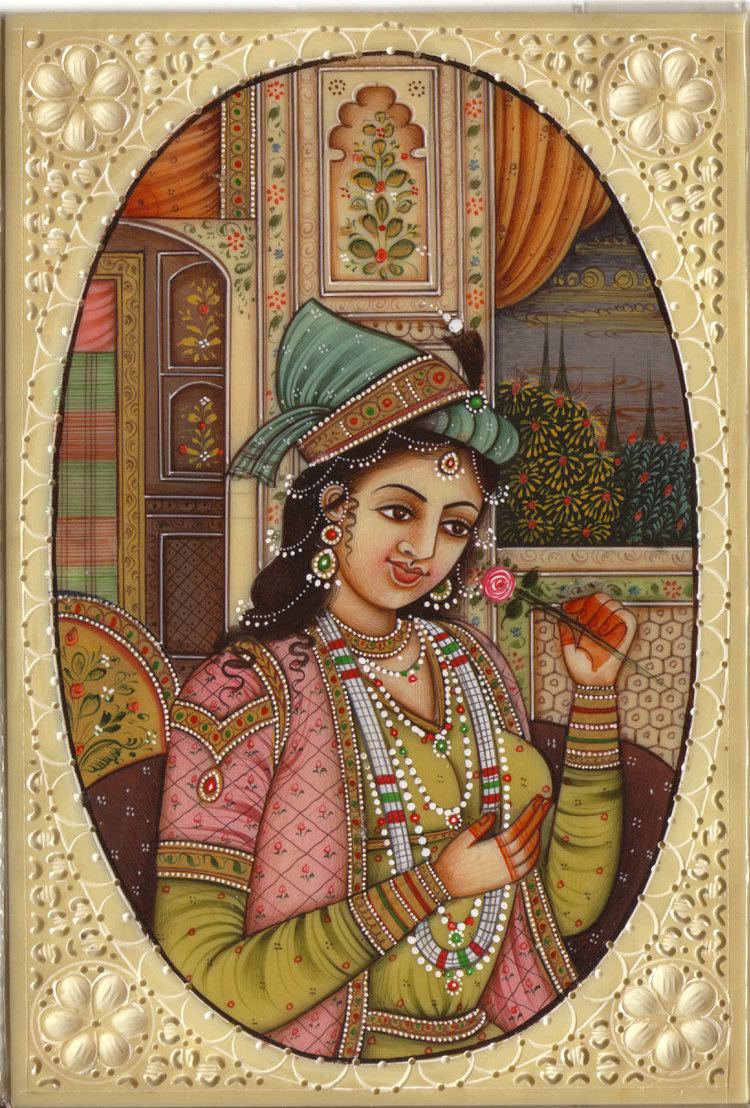 | ||
Issue Ladli Begum and 2 others Siblings Abul-Hasan ibn Mirza Ghiyas Beg, Muhammad Sharif Similar People | ||
नूरजहां मुगल काल की सर्वाधिक ताकतवर महिला || The Most Powerful Mughal Queen Noor Jahan
Nur Jahan (born Mehr-un-Nissa) (31 May 1577 – 17 December 1645) was Empress consort of the Mughal Empire from 25 May 1611 to 28 October 1627 as the eighteenth (and last) wife of the Mughal emperor Jahangir. She was also his most beloved and influential wife and acted as his chief consort and Padshah Begum, officially from 1620–1627, after the title's previous holder, Saliha Banu Begum (the Padshah Begum for most of Jahangir's reign), died in 1620.
Contents
- The Most Powerful Mughal Queen Noor Jahan
- Documentary NOOR JAHAN the Mughal Queen
- Birth and early life 15771594
- Marriage to Sher Afgan 15941607
- Lady in waiting to Empress Ruqaiya 16071611
- Marriage to Jahangir 16111627
- Jahangirs proposal and marriage
- Family advancements and consolidating power
- Mughal empress
- Later years and death 16281645
- Nur Jahan in popular culture
- References

Nur Jahan was born Mehr-un-Nissa, the daughter of a Grand Vizier (Minister) who served under Akbar. Nur Jahan, meaning 'Light of the World', was married at age 17 to a Persian soldier Sher Afgan, governor of Bihar, an important Mughal province. She was a married woman when Prince Salim (the future Emperor Jahangir), Akbar's eldest son, fell in love with her. Two years after Akbar died and Salim became Emperor, Sher Afgan met his death. However, three more years were to pass before a grieving Nur Jahan consented to marry the Emperor Jahangir. Although Jahangir was deeply in love with Nur Jahan, their actual story bears no resemblance to the entirely fictional legend of Anarkali, a low-born dancing girl who, according to popular folklore and film-lore, had a tragic and doomed love affair with Jahangir. In fact, the relationship between Jahangir and Nur Jahan was even more scandalous in its time than the legend of Anarkali, for Nur Jahan was a married woman when the Emperor fell in love with her.
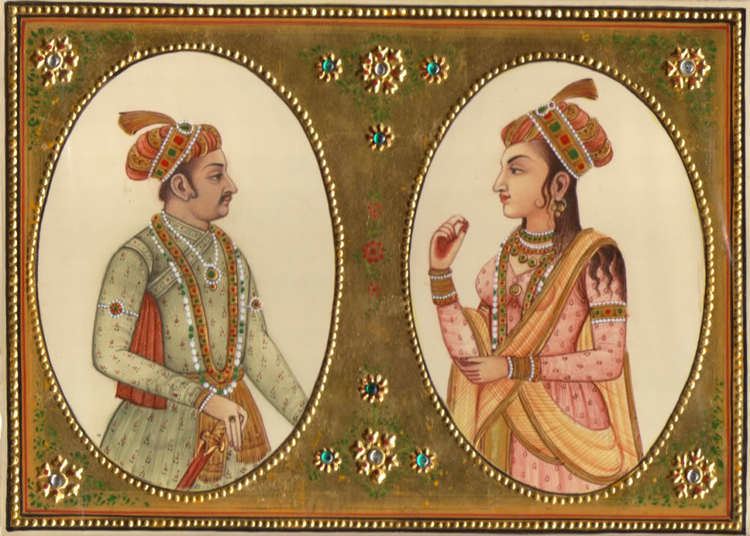
After the wedding, Nur Jahan quickly gained ascendency over her husband. A strong, charismatic and well-educated woman who dominated a relatively weak-minded husband, Nur Jahan was the most powerful and influential woman at court during a period when the Mughal Empire was at the peak of its power and glory. More decisive and pro-active than her husband, she is considered by historians to have been the real power behind the throne for more than fifteen years. Nur Jahan was granted certain honours and privileges which were never enjoyed by any Mughal empress before or afterwards.
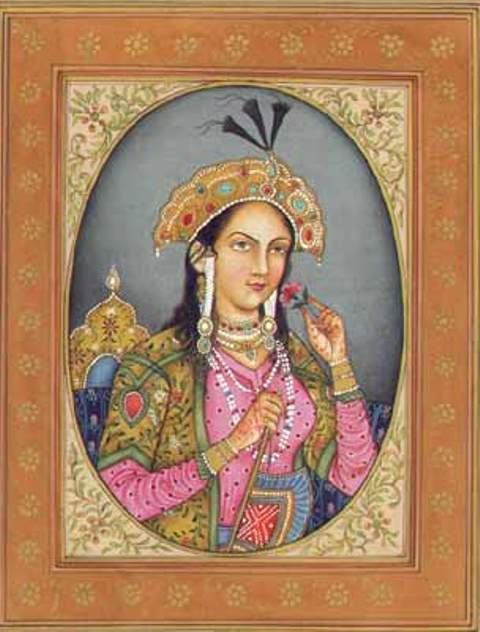
She was the only Mughal empress to have coinage struck in her name. She was often present when the Emperor held court, and even held court independently when the Emperor was unwell. She was given charge of his imperial seal, implying that her perusal and consent were necessary before any document or order received legal validity. The Emperor sought her views on most matters before issuing orders. The only other Mughal empress to command such devotion from her husband was Nur Jahan's niece Mumtaz Mahal, for whom Shah Jahan built the Taj Mahal as a mausoleum. However, she took no interest in affairs of state and Nur Jahan is therefore unique in the annals of the Mughal Empire for the political influence she wielded.
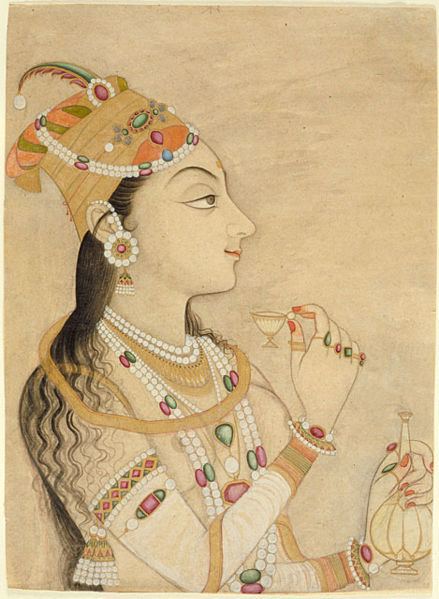
Documentary NOOR JAHAN the Mughal Queen
Birth and early life (1577–1594)
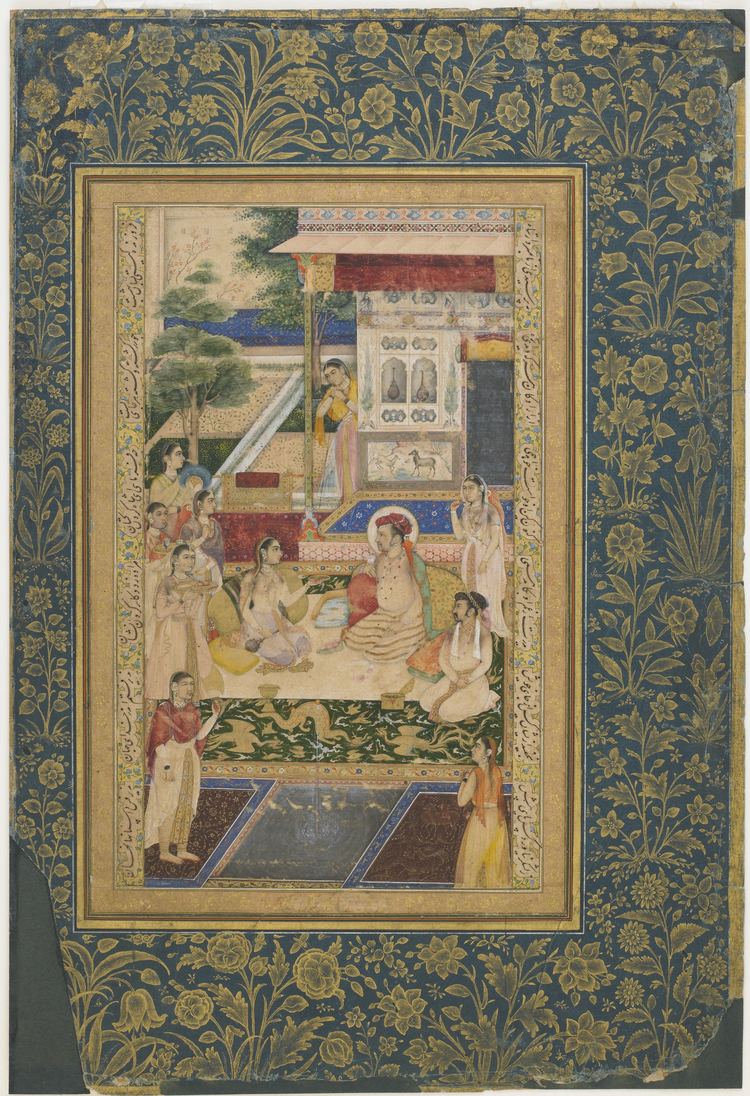
Nur Jahan was born Mehr-un-Nissa on 31 May 1577 in Kandahar, present-day Afghanistan, into a family of Persian nobility and was the second daughter and fourth child of the Persian aristocrat Mirza Ghias Beg and his wife Asmat Begam. Both of Nur Jahan's parents were descendants of illustrious families – Ghias Beg from Muhammad Sharif and Asmat Begum from the Aqa Mulla clan. For unknown reasons, Ghias Beg's family had suffered a reversal in fortunes in 1577 and soon found circumstances in their homeland intolerable. Hoping to improve his family’s fortunes, Ghias Beg chose to relocate to India where the Emperor Akbar's court was said to be at the centre of the growing trade industry and cultural scene.

Half way along their route the family was attacked by robbers who took from them the remaining meager possessions they had. Left with only two mules, Ghias Beg, his pregnant wife, and their three children (Muhammad Sharif, Asaf Khan ) were forced to take turns riding on the backs of the animals for the remainder of their journey. When the family arrived in Kandahar, Asmat Begum gave birth to their second daughter. The family was so impoverished they feared they would be unable to take care of the newborn baby. Fortunately, the family was taken in by a caravan led by the merchant noble Malik Masud, who would later assist Ghias Beg in finding a position in the service of Emperor Akbar. Believing that the child had signaled a change in the family’s fate, she was named Mehr-un-Nissa or ‘Sun among Women’. Her father was appointed diwan (treasurer) for the province of Kabul. Due to his astute skills at conducting business he quickly rose through the ranks of the high administrative officials. For his excellent work he was awarded the title of Itimad-ud-Daula or ‘Pillar of the State’ by the emperor.
As a result of his work and promotions, Ghias Beg was able to ensure that Mehr-un-Nissa (the future Nur Jahan) would have the best possible education. She became well versed in Arabic and Persian languages, art, literature, music and dance. The poet and author Vidya Dhar Mahajan would later praise Nur Jahan as having a piercing intelligence, a volatile temper and a sound common sense.
Marriage to Sher Afgan (1594–1607)
In 1594, when Nur Jahan was seventeen years old she married her first husband Ali Quli Istajlu (also known as Sher Afgan Khan). Sher Afgan was an adventurous Persian who had been forced to flee his home in Persia after the demise of his first master Shah Ismail II. He later joined the Mughal army and served under the Emperors Akbar and Jahangir. As a reward for his loyal service, Akbar arranged Nur Jahan's marriage with Sher Afgan. The couple had only one child together, a daughter, named Ladli Begum, who was born in 1605. While participating in a military campaign in Mewar under Prince Salim, Ali Quli Istajlu was bestowed the title of Sher Afgan or "Tiger Tosser". Sher Afgan's role in the rout of the Rana of Udaipur inspired this reward, but his exact actions were not recorded by contemporaries. A popular explanation is that Sher Afgan saved Salim from an angry tigress. The title has been sometimes misquoted in English history of the Mughals as 'Sher Afghan', which would have a different meaning.
In 1607, Sher Afgan was killed after it was rumoured he had refused to obey summons from the Governor of Bengal, took part in anti-state activities and attacked the governor when he came to escort Sher Afgan to court. Some have suspected Jahangir for arranging Sher Afgan’s death because the latter was said to have fallen in love with Nur Jahan and had been denied the right to add her to his harem. The validity of this rumour is uncertain as Jahangir only married Nur Jahan in 1611, four years after she came to his court. Furthermore, contemporary accounts offer few details as to whether or not a love affair existed prior to 1611 and historians have questioned Jahangir's logic in bestowing honours upon Sher Afgan if he wished to see him removed from the picture. The tomb, still in existence, at Purana/ Puratan Chawk in Burdwan district in West Bengal, India says that there was a battle between Sher Afgan and Qutubuddin Koka, the then Mughal Subahdar of Bengal and the foster brother of Jahangir in Burdwan in 1610 AD in which both of them died and were buried there at the tomb of Pir Baharam Sakka (died in 1563). Sher Afgan Khan was probably the appointed faujdar in Burdwan. It definitely does not go with the fact that Sher Afgan was murdered in the year 1607.
Lady-in-waiting to Empress Ruqaiya (1607–1611)
In 1605, the Emperor Akbar died and was succeeded by his eldest son Prince Salim, who took the regal name Jahangir. After her husband Sher Afgan was killed in 1607, Nur Jahan and her daughter, Ladli Begum, were summoned to Agra by Jahangir to act as ladies-in-waiting to his step-mother, the Dowager empress Ruqaiya Sultan Begum. Given the precarious political connections of Sher Afgan before his death, his family would be in certain danger with him gone from those seeking to avenge Qutbuddin's murder. For her own protection, then, Nur Jahan needed to be at the Mughal court in Agra. That she was brought back in honor (presumably because of her father's position at court) was clear from her new post with Ruqaiya Sultan Begum. Ruqaiya, having been the late Emperor Akbar's principal wife and being the most senior woman in the harem, was by stature and ability, the most capable of providing the protection that Nur Jahan needed at the Mughal court.
Nur Jahan was flattered to have been brought with her daughter into Ruqaiya's service, for even though she had relatives at court, her husband had gone down in ignominy and she could have rightly expected only the worst. It was under Ruqaiya's care, then, that Nur Jahan was able to spend time with her parents and occasionally visit the apartments where the emperor's women lived.
Nur Jahan and her daughter, Ladli Begum, served as ladies-in-waiting to the Empress for four years while earnestly endeavoring to please their imperial mistress. The relationship that grew between Nur Jahan and Ruqaiya appears to have been an extremely tender one. The Dutch merchant and travel writer Pieter van den Broecke, described their relationship in his Hindustan Chronicle, "This Begum [Ruqaiya] conceived a great affection for Mehr-un-Nissa [Nur Jahan]; she loved her more than others and always kept her in her company."
Marriage to Jahangir (1611–1627)
Nur Jahan and Jahangir have been the subject of much interest over the centuries and there are innumerable legends and stories about their relationship. Many stories allege an early affection between Nur Jahan and Emperor Jahangir before Nur Jahan's first marriage in 1594. One variation recounts that they were in love when Nur Jahan was seventeen years old, but their relationship was blocked by Emperor Akbar. However more modern scholarship has led to doubts about the existence of a prior relationship between Nur Jahan and Jahangir..
Jahangir's proposal and marriage
In 1611, while shopping with her patroness, Empress Ruqaiya, Nur Jahan met again the Emperor Jahangir at the palace meena bazaar during the spring festival of Nowruz which celebrated the coming of the new year. Jahangir proposed immediately and they were married on 25 May of the same year (Wednesday, 12th Rabi-ul-Awwal, 1020 AH/ May 25, 1611 AD). Nur Jahan was thirty four years old at the time of her second marriage and she would be Jahangir’s eighteenth and last legal wife. According to some accounts they were blessed with two children, while others report the couple remained childless. Incomplete records and Jahangir's abundant number of children obscure efforts to distinguish individual identities and maternity. This confusion is shown by later sources mistakenly identifying Nur Jahan as the mother of Shah Jahan. Jahangir's wife, Jagat Gosaini, a Rajput princess, was actually Shah Jahan's mother.
To honour his new beautiful and faithful wife, Jahangir gave her the title of 'Nur Mahal' ("Light of the Palace") upon their marriage in 1611 and 'Nur Jahan' ("Light of the World") five years later in 1616. Jahangir’s affection and trust of Nur Jahan led to her wielding a great deal of power in affairs of state. Jahangir's addiction to opium and alcohol made it easier for Nur Jahan to exert her influence. For many years, she effectively wielded imperial power and was recognized as the real force behind the Mughal throne. She sat alongside her husband on the jharoka to receive audiences, issued orders, oversaw the administration of several jagir (land parcels), and consulted with ministers. She even decreed Nishan which was a privilege reserved only for male members of the royal family. Nur Jahan had much affection for her husband and remained loyal and faithful to him even after his death.
Family advancements and consolidating power
After Sher Afgan's death Nur Jahan’s family was again found in a less than honourable or desired position. Her father was at that time, a diwan to an amir-ul-umra, decidedly not a very high post. In addition both her father and one of her brothers were surrounded by scandal as the former was accused of embezzlement and the latter of treason. Her fortunes took a turn for the better when she married Jahangir. The Mughal state gave absolute power to the emperor, and those who exercised influence over the emperor gained immense influence and prestige. Nur Jahan was able to convince her husband to pardon her father and appoint him Prime Minister. To consolidate her position and power within the Empire, Nur Jahan placed various members of her family in high positions throughout the court and administrative offices. Her brother Asaf Khan was appointed grand Wazir (minister) to Jahangir.
Furthermore, to ensure her continued connections to the throne and the influence which she could obtain from it, Nur Jahan arranged for her daughter Ladli to marry Jahangir's youngest son, Shahryar and her niece Arjumand Banu Begum (later known as Mumtaz Mahal) to marry Prince Khurram (the third son of Jahangir and the future Emperor Shah Jahan). The two weddings ensured that one way or another, the influence of Nur Jahan's family would extend over the Mughal Empire for at least another generation.
Mughal empress
Nur Jahan possessed great physical strength and courage. She often went on hunting tours with her husband, and was known for her marksmanship and boldness in hunting ferocious tigers. She is reported to have taken down four tigers with six bullets during one hunt. According to Sir Syed Ahmad Khan, this feat inspired a poet to declaim a spontaneous couplet in her honor:
"Though Nur Jahan be in form a woman, /
In the ranks of men she's a tiger-slayer"
Nur Jahan’s courage, bravery and administrative skills would come in handy throughout her reign as she as had to defend the Empire’s borders in her husband's absence and deal with family feuds, rebel uprisings, and a war of succession brought on by the failure of Jahangir to name an heir before he died on 28 October 1627.
Tensions between Nur Jahan and Jahangir's third son, the then-Prince Khurram and future Shah Jahan, had been uneasy from the start. Prince Khurram resented the influence Nur Jahan held over his father and was angered at having to play second fiddle to her favourite Shahryar, his half-brother and her son-in-law. When the Persians besieged Kandahar, Nur Jahan was at the helm of the affairs. She ordered Prince Khurram to march for Kandahar, but he refused. As a result of Prince Khurram's refusal to obey Nur Jahan’s orders, Kandahar was lost to the Persians after a forty-five-day siege. Prince Khurram feared that in his absence Nur Jahan would attempt to poison his father against him and convince Jahangir to name Shahryar the heir in his place. This fear brought Prince Khurram to rebel against his father rather than fight against the Persians. In 1622 Prince Khurram raised an army and marched against his father and Nur Jahan. The rebellion was quelled by Jahangir's forces and the prince was forced to surrender unconditionally. Although he was forgiven for his errors in 1626, tensions between Nur Jahan and her stepson would continue to grow underneath the surface.
In 1626, the Emperor Jahangir was captured by rebels while on his way to Kashmir. The rebel leader Mahabat Khan had hoped to stage a coup against Jahangir. Nur Jahan intervened to get her husband released. Nur Jahan ordered the ministers to organize an attack on the enemy in order to rescue the Emperor; she herself would lead one of the units by administering commands from on top of a war elephant. During the battle Nur Jahan’s mount was hit and the soldiers of the imperial army fell at her feet. Realizing her plan had failed Nur Jahan surrendered to Mahabat Khan and was placed in captivity with her husband. Unfortunately for the rebels, Mahabat Khan failed to recognise the creativity and intellect of Nur Jahan as she soon was able to organize an escape and raise an army right under his very nose.
Shortly after being rescued, Jahangir died on 28 October 1627. Jahangir’s death sparked a war of succession between his remaining competent sons Prince Khurram who had proclaimed himself Shah Jahan and Prince Shahryar. Jahangir's eldest son Khusrau had rebelled against the Emperor and was blinded as a result. He was later killed during an uprising in Deccan. Jahangir’s second son, Parviz, was weak and addicted to alcohol. Afraid that if Shah Jahan was made emperor she would lose her influence in court, Nur Jahan chose to side with Shahryar who she believed could be manipulated much more easily. During the first half of the war it appeared as though Shahryar and Nur Jahan might turn out to be the victors; however, the two were betrayed by Nur Jahan’s brother. Asaf Khan, jealous of his sister’s power, sided with Shah Jahan (who was furthermore married to Asaf Khan's daughter Mumtaz Mahal). While Asaf Khan forced Nur Jahan into confinement, Shah Jahan defeated Shahryar's troops and ordered his execution. In 1628, Shah Jahan became the new Mughal emperor.
Later years and death (1628–1645)
Nur Jahan spent the remainder of her life confined to a comfortable mansion with her daughter Ladli. During this period, she paid for and oversaw the construction of her father's mausoleum in Agra, known now as Itmad-Ud-Daulah's Tomb, and occasionally composed Persian poems under the assumed name of Makhfi ("Hidden One"). Nur Jahan died on 17 December 1645 at age 68. She is buried at her tomb in Shahdara Bagh in Lahore, which she had built herself. Upon her tomb is inscribed the epitaph "On the grave of this poor stranger, let there be neither lamp nor rose. Let neither butterfly’s wing burn nor nightingale sing". Her tomb was not too far way from the tomb of Jahangir. Her brother Asaf Khan's tomb is also located nearby. The tomb attracts many visitors, both Pakistani and foreign, who come to enjoy pleasant walks in its gardens.
